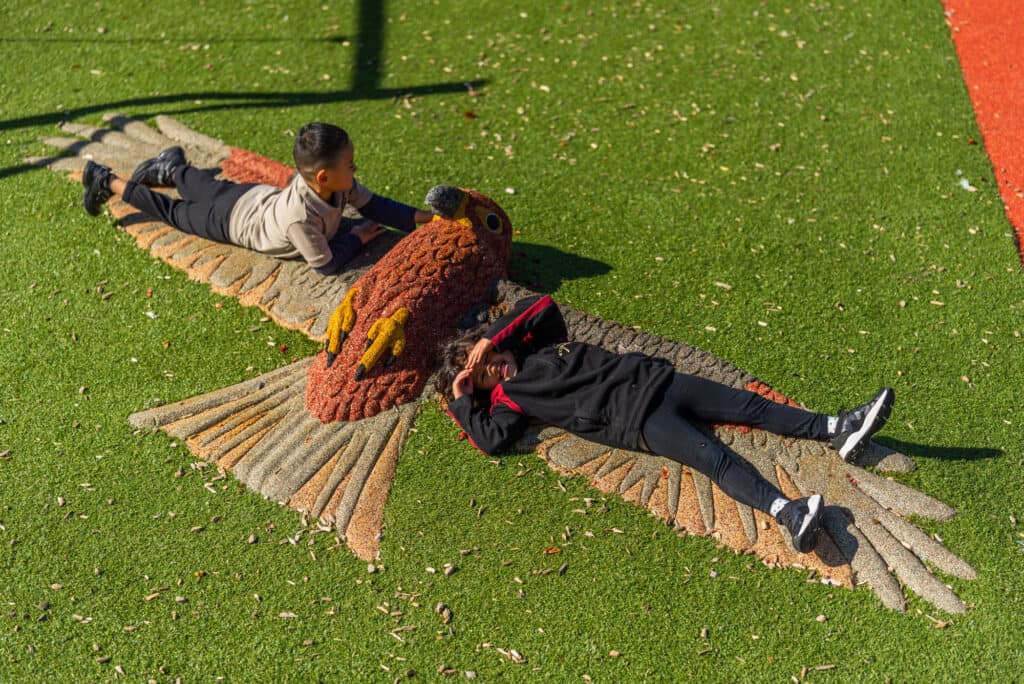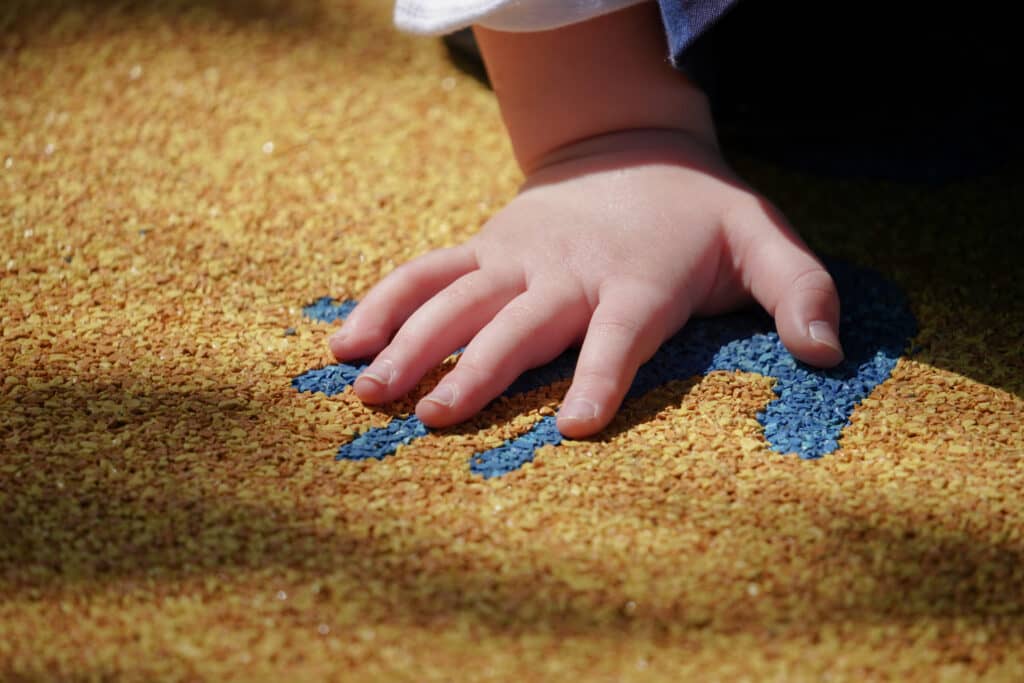In playground design, it is easy to forget the importance of surface design. Far from being just a backdrop, the surface of a playground plays a crucial role in bringing it all together.
It’s a critical safety feature and a canvas to tell the story of the community or school it represents. So, get ready and learn more in this article about how to create unique designs and how the surface will make your playground unique.
Weaving Stories Through Surface Design
Beyond safety, surface design offers a unique opportunity to weave the local narrative into the playground. For instance, a playground in a coastal town might feature a sea-themed surface design, using blues and greens to mimic the ocean, fostering a sense of connection to the local environment.
The surface can connect one piece of equipment to another, creating a flow, one of the most important aspects we look at when designing your concept.

The Safety Aspect of Surface Design
Safety is one of the most overlooked aspects of compliance and playground design. The choice of surface material can significantly reduce the risk of injuries.
Materials like wet pour rubber or soft grass are commonly used to cushion falls, providing a safer environment for children to play and explore.
Educational and Skill Development Surfaces
Surface designs can be educational and skill-enhancing. Incorporating numbers and alphabets into the design encourages learning, while obstacle courses designed into the surface, like a ‘floor is lava’ game, promote motor skill development.
Storytelling and Community Engagement
Playgrounds can become storytelling platforms. A design that includes elements of the local landscape, like a community river or mountains, not only adds aesthetic value but also strengthens community ties and fosters a sense of pride and belonging. A great example is how Opotiki District Council told their local story through the surface design at the Whitikau Reserve Playground.

Play Value and Equipment Integration
The play value of a playground isn’t limited to the equipment. Integrating the surface design with play structures creates a cohesive and engaging environment.
This synergy between elements can transform a playground into a unique and captivating space.
Inclusivity and Sensory Experiences
Inclusive design is crucial. A playground should cater to people of all ages and abilities. Surfaces that use different colours, shapes, and directions guide users, creating an accessible and welcoming space.
Sensory pathways with varied textures like grass, pebbles, and mulch offer a unique experience, catering to different sensory needs.
Cost-Effectiveness and Long-Term Value
Investing in surface design is not just about aesthetics; it’s a cost-effective strategy. A well-designed surface contributes to the playground’s longevity and reduces maintenance costs. More importantly, it enhances the play experience and fosters a sense of belonging among its users.
Conclusion
Surface design in playgrounds is more than just a functional aspect; it’s a canvas for safety, learning, storytelling, and community engagement.
As we recognise its importance, we open up new possibilities for creating fun, safe, meaningful, and inclusive spaces.
For communities and schools looking to build or renovate playgrounds, considering surface design is not just an option; it’s a necessity that enriches the play experience and nurtures a sense of community belonging.
If you want to know more about the Creo process in designing and building your playground, book a 15-minute ideas session below.